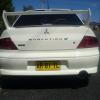what compression should a Gts-t R33 have
Announcements
-
Similar Content
-
Latest Posts
-
Where is the warning "That this thread is super old" I just went into a 5 year old thread, went to do a reply, and couldn't see anywhere obvious a warning of it being super old
-
Duncan is correct. Pitwork (and Toyota's own cheap brand "Drive Joy") were primarily created as brands to sell other manufacturers car parts. It would be weird if Nissan sold parts for Toyota vehicles with a Nissan logo on it, so they created Pitwork to sell parts for other brans Toyota, Honda etc. They are not the same as Nissan genuine parts, although they *do* meet Nissan's standards for replacement parts. They aren't supposed to be a substitute for genuine parts, but a cheaper alternative that is better than Ebay fake parts from you-know-where.
-
I _think_ that one has a christmas tree or some other retainer spike into a hole in that panel under it. Come in under it with thin scredrivers and just pry it gently up. If you rip the ears off the retainer pin....so what? Just stick it back down after with a bit of race tape and carry on with life.
-








Recommended Posts
Create an account or sign in to comment
You need to be a member in order to leave a comment
Create an account
Sign up for a new account in our community. It's easy!
Register a new accountSign in
Already have an account? Sign in here.
Sign In Now